
What is it?
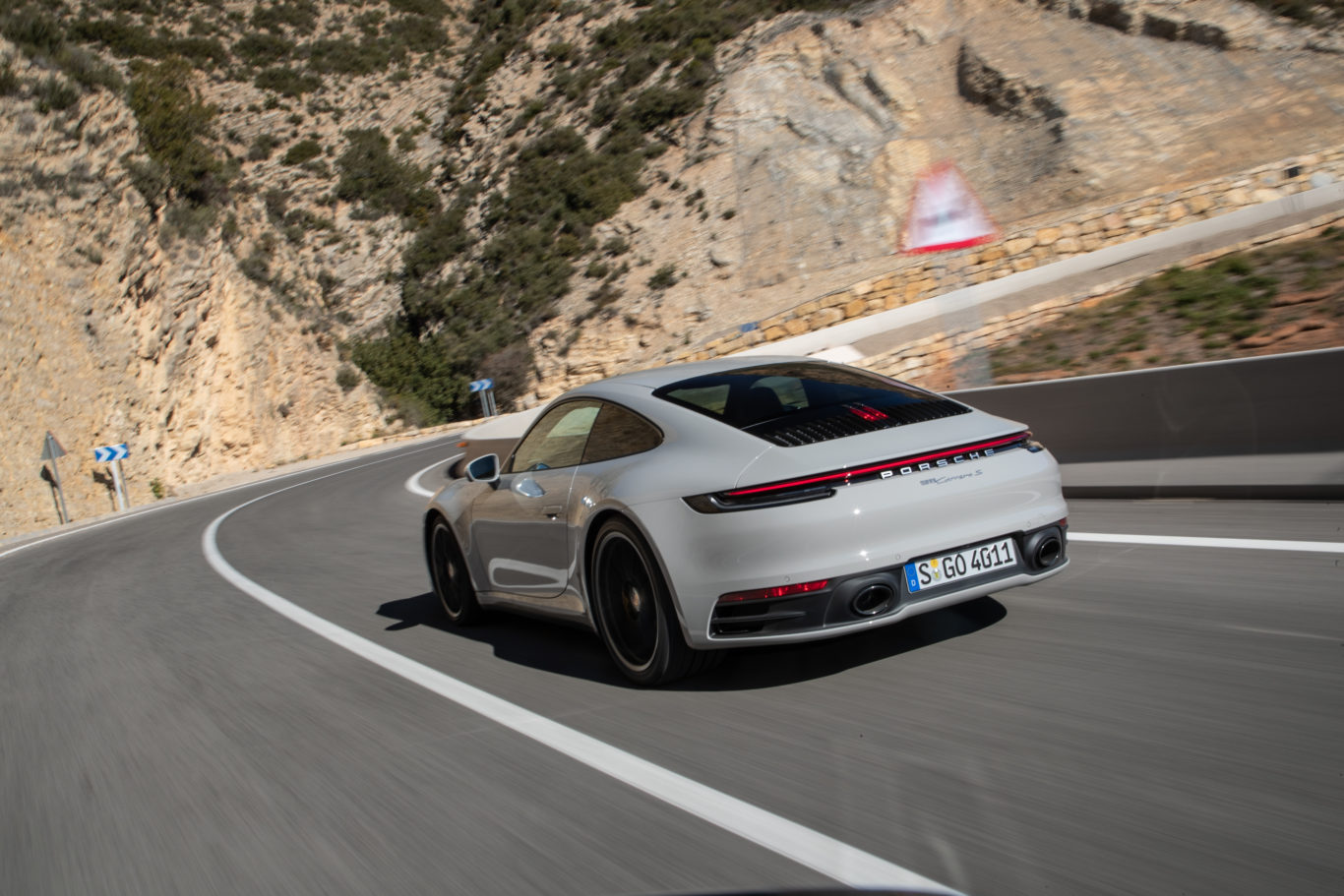
Quite simply one of the most famous badges, and possibly the most famous sports car of all time. The Porsche 911’s been with us in one form or another for decades now, and in that time it’s developed a reputation for delivering a pure enthusiast’s driving experience.
Although the 911 has become more modern and luxurious as time goes on, Porsche has remained stubborn that the engine should stay at the back, endowing the car with a unique character and spectacular handling. This is the latest 992-generation model, and it doesn’t change the formula so much as it refines it.
What’s new?
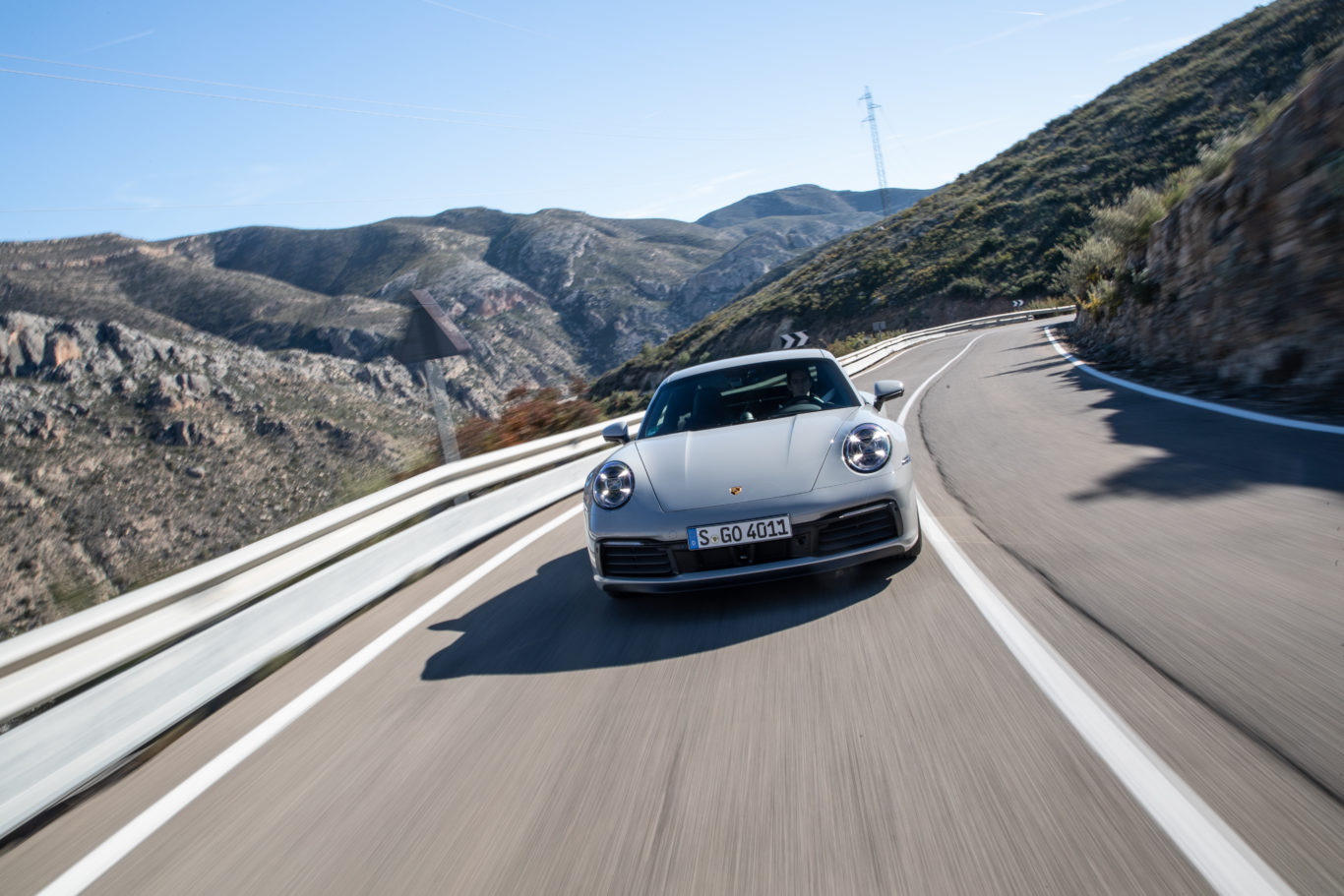
The new design pairs classic Porsche cues and carryovers from the previous model with a few additional touches. Don’t be fooled, though – the bodyshell is entirely new. All cars now receive the same wider stance previously reserved for all-wheel-drive models, so the only true distinguishing features between the two launch models – Carrera S and Carrera 4S – are the badges and a piece of trim above the tail lights.
The rear uses the same style of full-width light bar as the Cayenne. Under the skin, there’s more power from the flat-six turbocharged engine, along with a few chassis alterations (including, for the first time, differently sized wheels front and rear) and a new, eight-speed PDK dual-clutch gearbox.
What’s under the bonnet?
Quite the car. Quite the road. pic.twitter.com/Kjq8p3Kr84
— Tom Wiltshire (@mctreckmeister) January 27, 2019
The only choice customers will have to make at launch is whether they’d like two- or four-wheel drive – as there are only the Carrera S and Carrera 4S to choose from for now. Both use the same rear-mounted flat-six engine, producing 444bhp and 530Nm of torque.
A seven-speed manual gearbox is on the way but an eight-speed dual-clutch automatic is all that’s available at the moment. As for performance, it’s as impressive as the numbers suggest – 0-60mph is dispatched in as little as 3.3 seconds in the rear-wheel-drive Carrera S, and top speed is 191mph.
It’s a superb engine. Despite the turbochargers, throttle response is really crisp and there’s ample power nearly up to the 7,400rpm redline. The metallic roar of the flat-six sounds great, too, and there’s more than enough poke to have some truly exciting moments in the bends. Slip the Drive Mode back into Normal, though, and the 911 will cruise happily with the best of them – the ultra-long eighth gear acts more as an overdrive, making for a superbly refined long-distance cruiser.
What’s it like to drive?
I would very much struggle not to tick the box for yellow. New 911 doesn't look much different but it drives like a dream pic.twitter.com/LMTH3fS3jE
— Tom Wiltshire (@mctreckmeister) January 28, 2019
The Porsche 911 is one of the most capable, rewarding and downright satisfying steers on the market. The way the steering responds so crisply and instantly is what the 911 is best known for, and it’s at its best in this new 992 model – which features both a wider track for greater stability and rear-wheel steering for improved agility.
String together a series of sweeping bends, slam it into a hairpin and put your foot down on the exit and you’ll struggle to feel anything but joy. It’s not just mechanical either – so good are the driver aids that the 911 never appears to be anything but unflappable, yet the whole experience is wonderfully analogue in feel. It may be a cliché but the driver really does feel in harmony with the machine.
Opting for a ‘4’ will undoubtedly bring extra grip in wet scenarios, but the rear-drive models feel so secure we wouldn’t bother paying the extra. They feel lighter over the front wheels too, making that steering even more joyous to use.
How does it look?
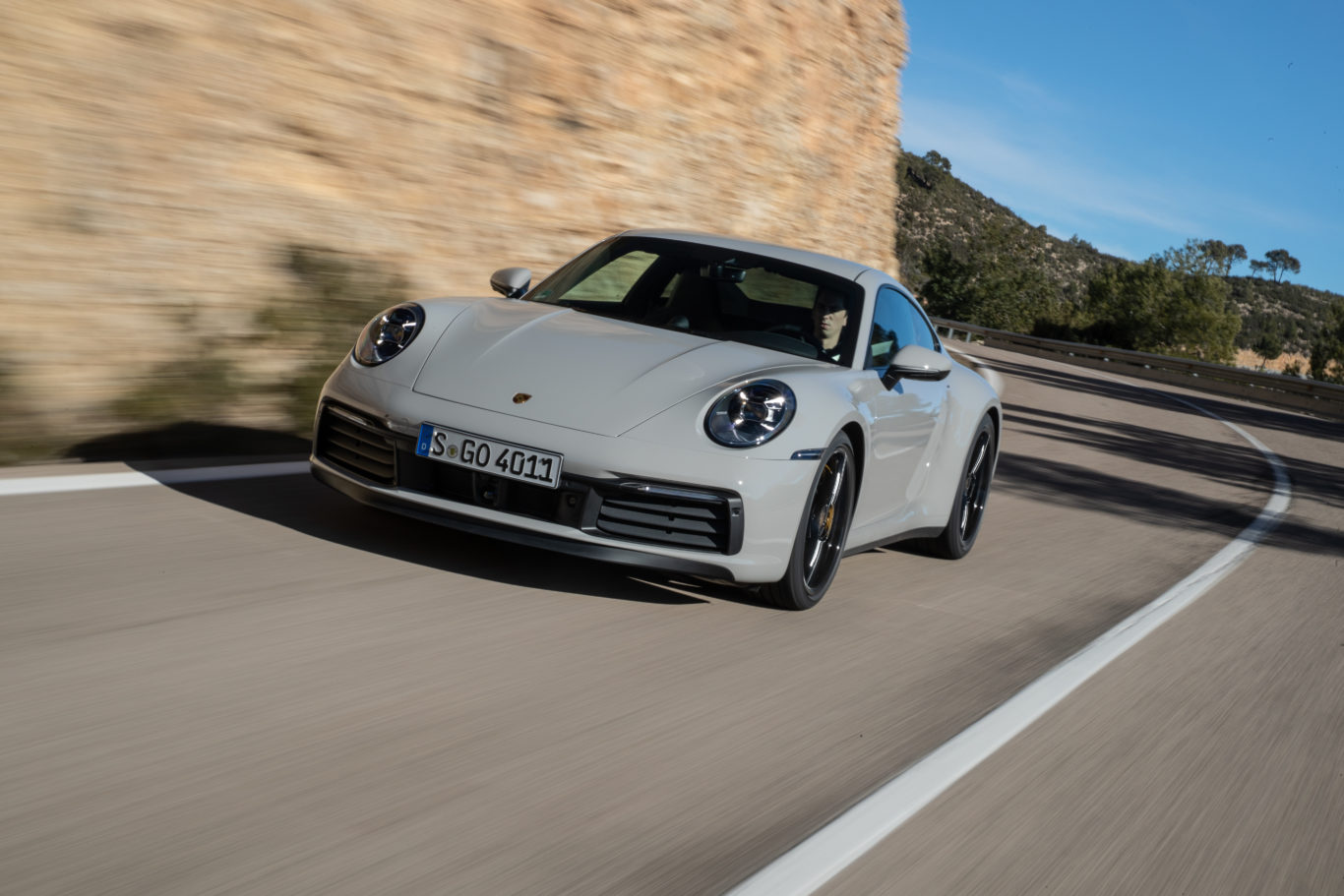
The new 911 is, well, unmistakeably a 911. The bum-heavy silhouette and sloping nose is a product of the rear-engine layout, and it’s definitely iconic. For the 992, Porsche has sharpened up some of the edges and given it even more purpose.
Round the front, things are much the same as before, but the lid to the ‘frunk’ (or front boot) now has corners rather than a rounded edge. The rear, meanwhile, has been totally redesigned with strong horizontal lines, a new ribbed engine cover, a full-width adjustable spoiler and full-width LED light bar. The interior, meanwhile, uses the same horizontal motif.
What’s it like inside?
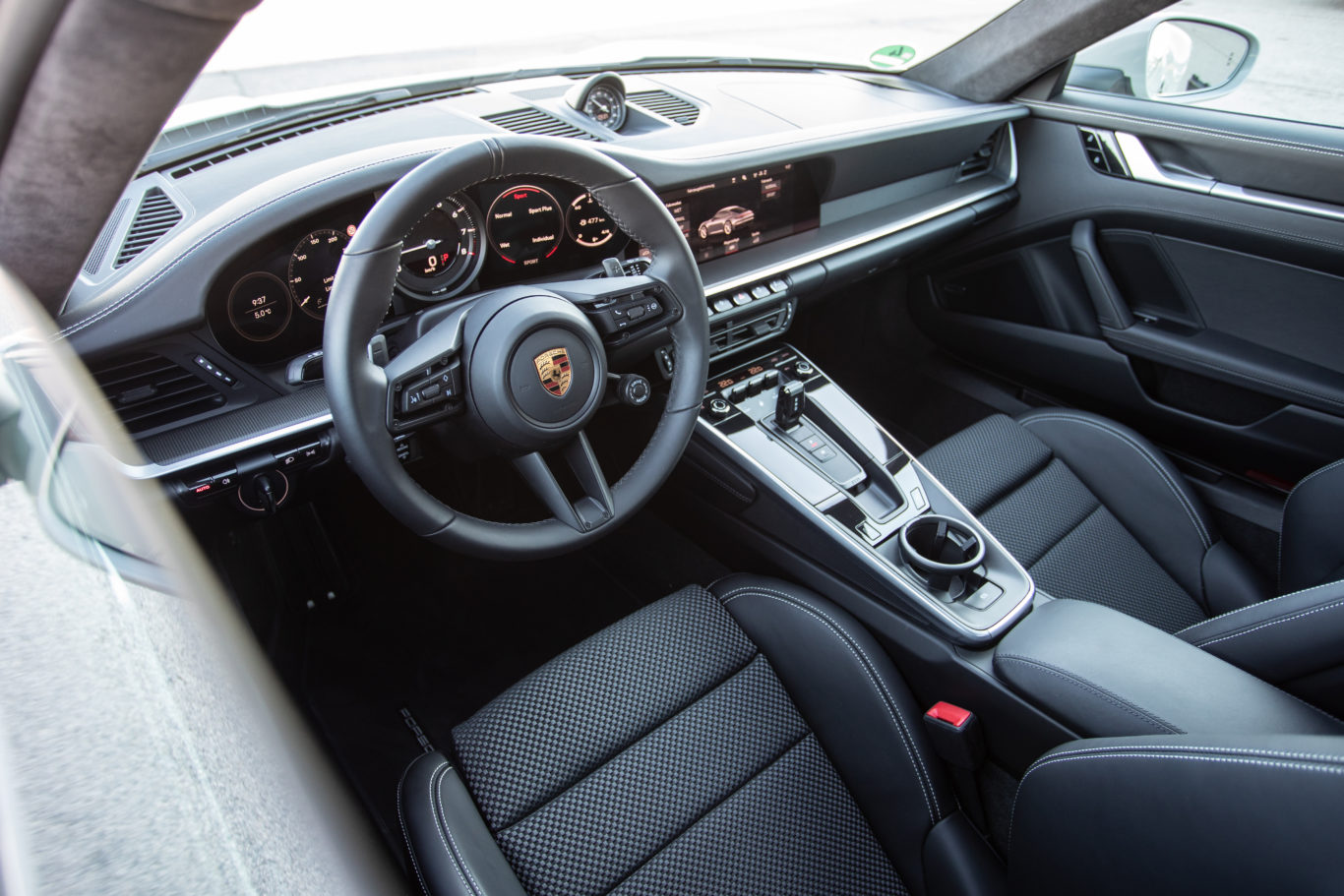
The interior’s been given a serious injection of class, but the clear driver focus remains. For example, Porsche steadfastly sticks with an analogue rev counter, flanked by digital instruments rather than a fully digital panel.
The driving position is nearly perfect and endlessly adjustable, with comfortable seats that hug your body just enough without being too tight – although full adjustability is a £2,000 option. Meanwhile, the additional technology draws the ideal line between being intrusive and useful. The central screen is large, super-responsive and crystal clear, and although the removal of the large button panels from the centre console will rile some people, there’s no denying it tidies up the cabin.
To be picky, the tiny gear selector feels rather fragile considering it’s holding back 444bhp, and the outer edges of the digital instrument panel are obscured by the steering wheel unless you move your head. But those are really small issues.
What’s the spec like?
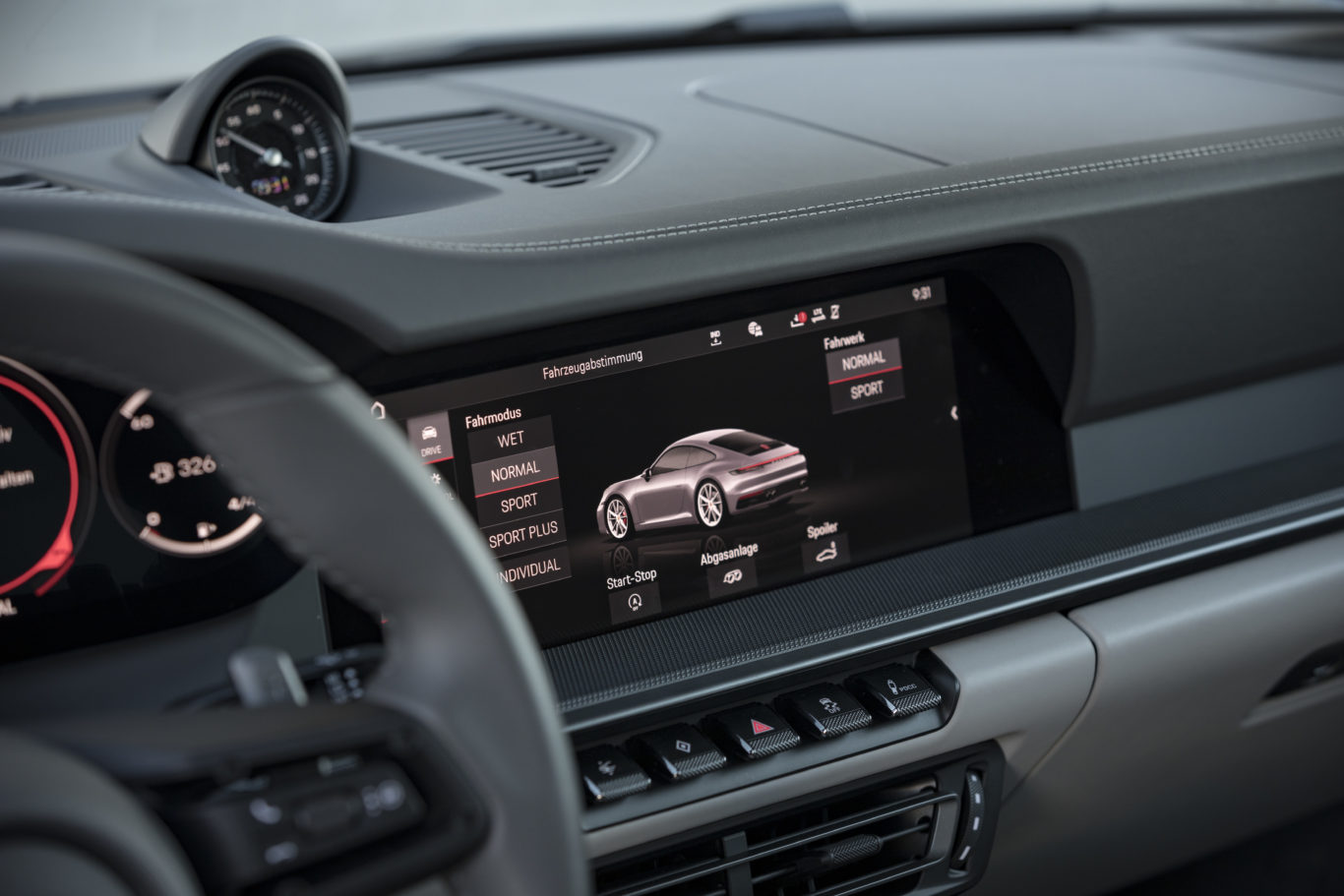
Don’t expect to pay the 911 Carrera S’s sticker price of £93,110. To get the best out of this car, it really needs some options added. The test cars we drove would have cost no less than £115,000.
We’d say Porsche’s Dynamic Chassis Control is a must – it costs £2,273 but must be paired with £1,592 rear-wheel steering. The Sport Chrono Pack is also essential, bringing the drive mode selector and a stopwatch for £1,646.
Carbon-ceramic brakes cost over £6,000 but could be worth it if you intend driving your 911 particularly hard – and we’d also be tempted by a few comfort options such as the upgraded Bose sound system, parking sensors plus reversing camera, and adaptive cruise control. Porsche does at least cover the bare essentials, but not fitting LED lights as standard feels beyond stingy.
Verdict
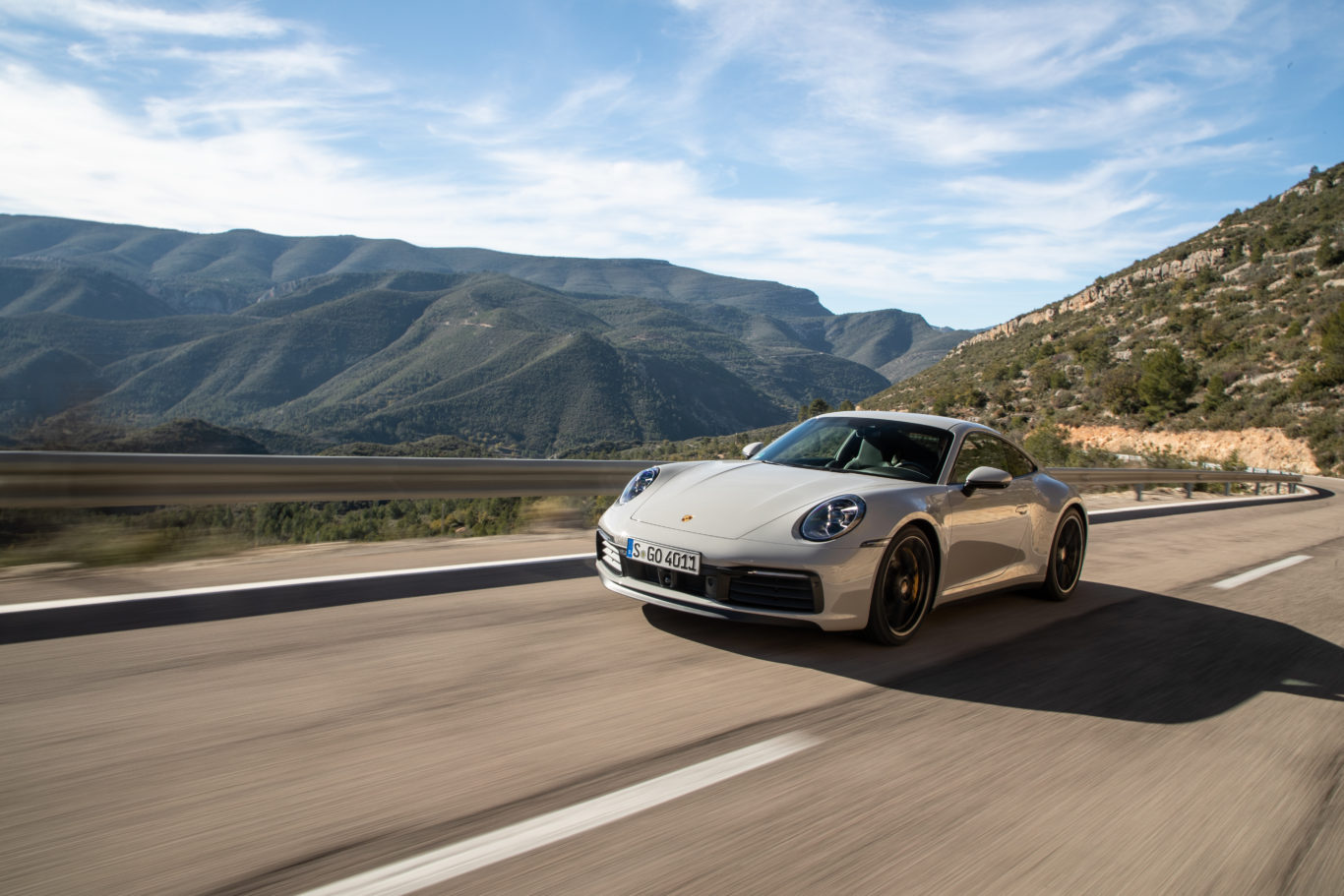
Getting the 911 ‘right’ is something Porsche has managed time and time again, and we’re thrilled to say it’s pulled it off once more. Making the 911 a better, more refined cruiser could easily have taken away from its ability as a sports car, but technology applied with a light touch means it enhances rather than overpowers. Some aspects of the interior, as well as the stingy options list, do irritate – but from a driving perspective, this is an incredible car.

Enjoy the convenience of having The Sunday Post delivered as a digital ePaper straight to your smartphone, tablet or computer.
Subscribe for only £5.49 a month and enjoy all the benefits of the printed paper as a digital replica.
Subscribe